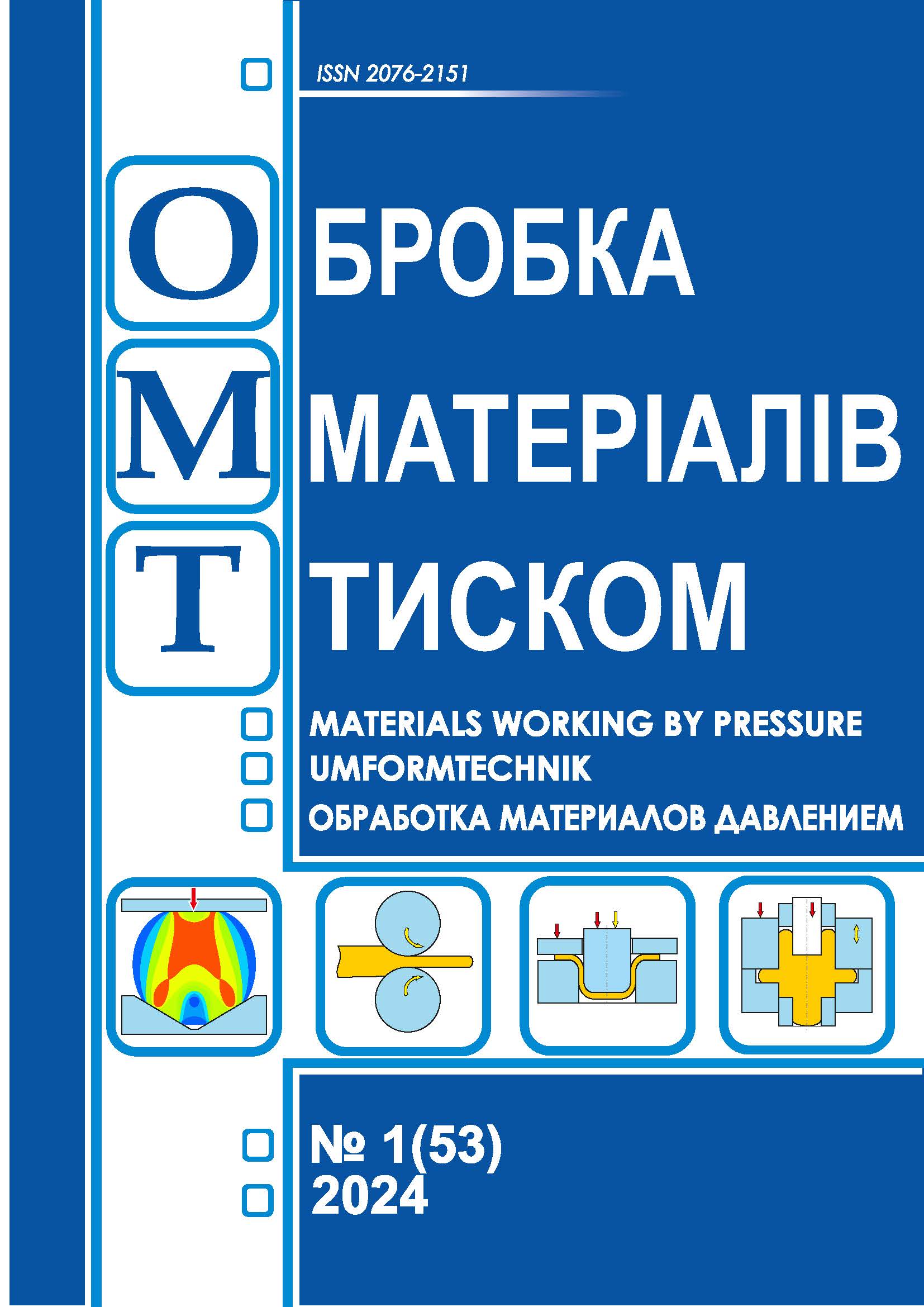impact energy control, angular velocity, moment of inertia, mass, screw press, slider mass, linear speed of the slider
DOI:
https://doi.org/10.37142/2076-2151/2024-1(53)152Keywords:
impact energy control, angular velocity, moment of inertia, mass, screw press, slider mass, linear speed of the slider.Abstract
Оbdul V., Matiukhin A., Shirokobokov V., Ben A., Lenok A., Epishkin O.
Methods of impact energy control in screw presses
The design of a screw press with a clutch with the control of impact energy both in a series and during transitions is developed. Analysis of existing control methods shows that the technological requirements for these systems are not always met. In turn, the analysis of screw press designs and their technological application shows that the problem of output parameter adjustability must be solved simultaneously with the design improvements of the presses themselves. The proposed design of the press with impact energy control practically eliminates these shortcomings, since it is a closed-loop system with rigid feedback on the angular velocity of the flywheel masses using a thyristor-motor drive. It is shown that the determination of the installed power of the electric motor depends on the ratio of the maximum value of the energy stored in the main drive of the press to the minimum value and the ratio of the moments of inertia of the driving and driven masses and the frequency of the press strokes. The installed power of the main electric motor will be determined by the most severe mode of operation during the period of signal development when switching from the minimum energy accumulated by the masses to the maximum, or during the period of switching on the friction clutch for the working stroke of the press, i.e. this mode is determined by the range of impact energy control, the number of strokes of the press slider and the ratio of the moments of inertia of the driving and driven masses mounted on the screw spindle. The use of rigid feedback on the angular velocity of the masses makes it possible to reduce the duration of the transient process and, consequently, the duration of the straight stroke of the press slider. The existing methods of impact energy control on screw presses are analyzed.

